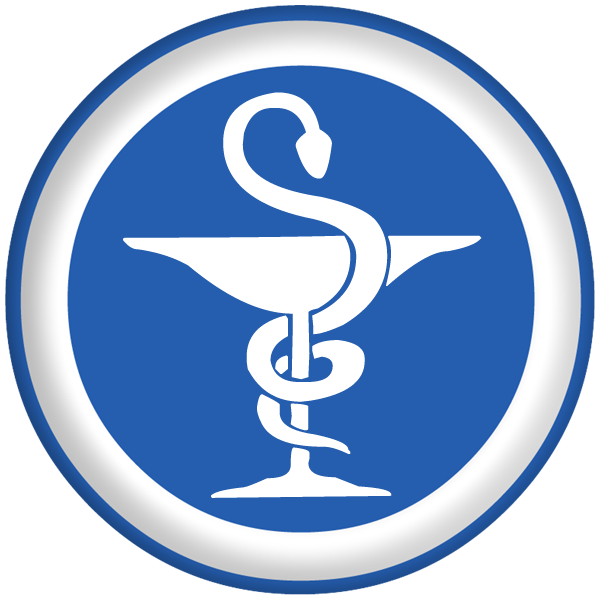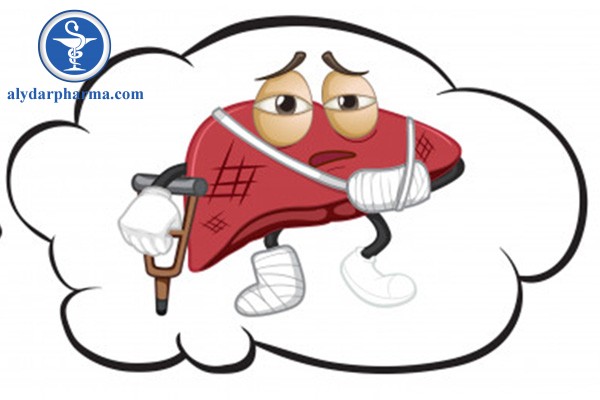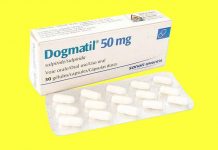Contents
1. Tổng quan:
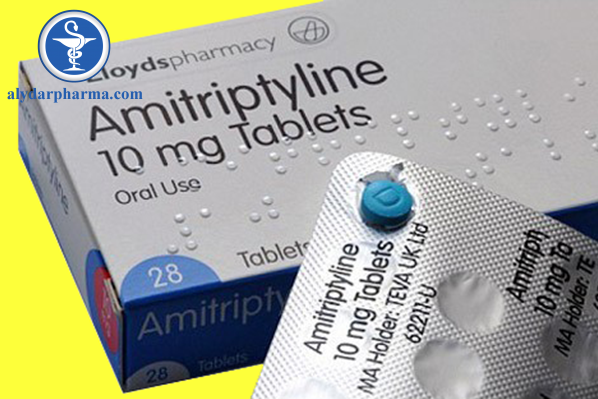
-
Giới thiệu:
Amitriptyline là thuốc chống trầm cảm 3 vòng được sử dụng phổ biến trong điều trị trầm cảm.
Amitriptyline có thể gây tăng enzym huyết thanh nhẹ và thoáng qua và là nguyên nhân hiếm gặp của tổn thương gan ứ mật cấp tính rõ ràng trên lâm sàng.
-
Khái quát:
Cơ chế tác dụng của amitriptyline là ức chế sự tái hấp thu của serotonin và norepinephrine ở các khe synap của hệ thần kinh trung ương, do đó tăng cường mức dẫn truyền thần kinh trong não.
Amitriptyline được chỉ định trong liệu pháp điều trị trầm cảm và chính thức được chấp thuận chỉ định này tại Mỹ vào năm 1961, và hiện nay vẫn đang còn sử dụng rộng rãi, với hơn 10 triệu đơn thuốc chứa amitriptyline mỗi năm.
Ngoài ra, thuốc này cũng được sử dụng để điều trị đau thần kinh, chứng chán ăn (anorexia) lẫn chứng cuồng ăn (bulimia).
Trên thị trường, amitriptyline cũng có dạng thuốc generic và được bán dưới tên biệt dược gốc Elavil ở dạng viên nén có hàm lượng 10, 25, 50, 75, 100, 150 mg.
Liều khuyến cáo điển hình cho người lớn mắc chứng trầm cảm là từ 75 đến 100 mg mỗi ngày và ngày 2 lần, tăng liều dần cho đến tối đa 300 mg mỗi ngày.
Ngoài ra, thuốc còn thể thể dùng một lần vào buổi tối với liều 50 đến 150 mg. Các tác dụng phụ thường gặp khi sử dụng amitriptyline là chóng mặt, nhức đầu, buồn ngủ, bồn chồn, nhầm lẫn, rối loạn tiêu hóa, tăng cảm giác ngon miệng, tăng cân, mờ mắt, khô miệng và bí tiểu.
-
Độc tính trên gan:
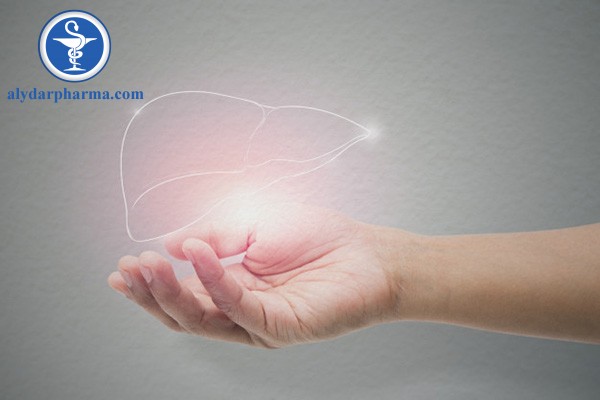
Các kết quả xét nghiệm gan bất thường đã được báo cáo ở 10-12 % bệnh nhân sử dụng amitriptyline, nhưng sự tăng lên không phổ biến, gấp khoảng 3 lần giới hạn bình thường trên.
Các bất thường về aminotransferase thường nhẹ, không triệu chứng, thoáng qua, ngay cả khi tiếp tục dùng thuốc.
Các trường hợp hiếm của tổn thương gan ứ mật cấp biểu hiện trên lâm sàng được ghi nhận ở những bệnh nhân dùng amitriptyline, với thời điểm khởi phát rất thay đổi, từ 10-14 tháng kể từ khi dùng thuốc. Số liệu báo cáo cho thấy: sự tăng enzyme huyết thanh thay đổi từ tế bào gan đến ứ mật.
Hội chứng giống viêm gan cấp với suy gan cấp, đồng thời hội chứng viêm gan ứ mật cấp và vàng da kéo dài, cùng hội chứng biến mất ống mật cũng được ghi nhận.
Các dấu hiệu hay hội chứng do quá mẫn (phát ban, sốt, tăng eosinophil) xảy ra thường xuyên, nhưng thường nhẹ và thoáng qua. Sự hình thành tự kháng thể của cơ thể thì càng hiếm hơn nữa.
Likehood score: B (rất có thể là nguyên nhân gây tổn thương gan trên lâm sàng).
-
Cơ chế gây tổn thương:
Cơ chế tăng aminotransferase huyết thanh do amitriptyline vẫn chưa được biết rõ.
Thuốc được chuyển hóa qua gan và có thể hình thành nên chất chuyển hóa trung gian gây độc cho gan. Rất nhiều trường hợp có đặc điểm của quá mẫn và tái phát nhanh hơn khi dùng có liên quan đến một haplotype HLA đặc hiệu (A11).
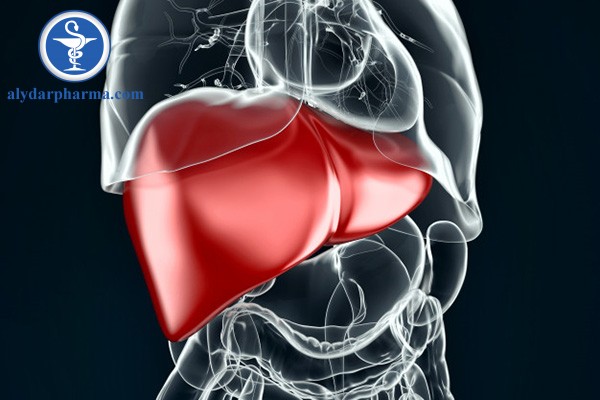
-
Kết luận và quản lí:
Tăng nồng độ aminotransferase thuyết thanh xảy ra khi điều trị bằng amitriptyline thường tự giới hạn và không cần phải điều chỉnh liều hay dừng điều trị.
Tổn thương gan cấp gây ra bởi amitriptyline cũng thường tự giới hạn, nhưng đã ghi nhận được trường hợp tiến triển và tử vong do viêm gan cấp, ứ mật kéo dài với hội chứng biến mất ống mật.
Sử dụng lại amitriptyline thường gây tổn thương gan tái phát có thể gây tử vong, do đó, cần nên tránh. Phản ứng chéo gây tổn thương gan với các thuốc chống trầm cảm 3 vòng khác cũng đã được mô tả, nhưng không phải là luôn luôn gặp.
Do đó, việc đổi sang thuốc chống trầm cảm ba vòng khác sau khi có dấu hiệu tổn thương gan trên lâm sàng cần tránh, hoặc sử dụng thận trọng.
Đổi sang một loại thuốc khác, ví dụ như ức chế tái hấp thu chọn lọc serotonin được khuyến cáo là biện pháp an toàn.
2. Ca lâm sàng:
Ca 1: Suy gan cấp do amitriptyline
[Từ: Danan G, Bernuau J, Moullot X, Degott C, Pessayre D. Amitriptyline-induced fulminant hepatitis. Digestion 1984; 30: 179-84]
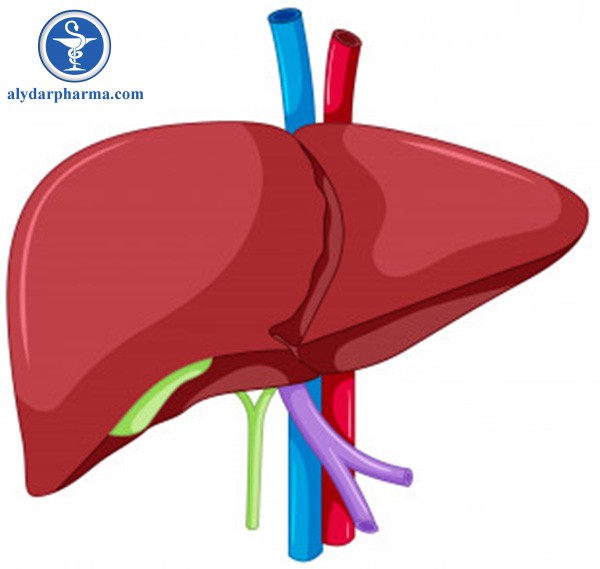
Một phụ nữ 51 tuổi bị sốt và đau khớp 2 ngày sau khi bị vàng da, khoảng 14 tháng sau khi sử dụng amitriptyline (30 mg/ngày) và perphenazine (12 mg/ngày).
Bà ấy bị vàng da và sốt nhưng không có phát ban hay ngứa. Mức bilirubin huyết thanh tăng và mức ALT tăng gấp 27 lần giới hạn bình thường trên. Kết quả xét nghiệm cho thấy bệnh nhân này âm tính với kháng nguyên bề mặt virus viêm gan B và cũng không có dấu hiệu tắc nghẽn mật khi siêu âm.
Các triệu chứng và vàng da biến mất khi ngừng sử dụng thuốc, trong khi các xét nghiệm trở về bình thường sau 2 tháng. Ngay sau đó, amitriptyline và perphenazine được sử dụng lại.
Trong 12 ngày, bà ấy bị vàng da và sốt lại, tiến triển thành suy gan với các dấu hiệu như lú lẫn, dấu run vẫy và cổ chướng. Sinh thiết gan thấy hoại tử lớn. Nồng độ bilirubin huyết thanh đạt đỉnh trong một tuần sau khi ngừng điều trị và sau đó được cải thiện. Bệnh nhân hồi phục chậm, và sau 4 tháng tất cả xét nghiệm gan đều bình thường.
Từ khóa:
- Thuốc: Amitriptyline
- Kiểu: Tế bào gan (R=22)
- Mức độ nghiêm trọng: 4+ (vàng da kéo dài, suy gan)
- Độ trễ: Ban đầu 14 tháng, 12 ngày kể từ khi tái sử dụng
- Phục hồi: 4 tháng
- Các thuốc khác: Perphenazine, sulpiride
Kết quả xét nghiệm:
| Thời gian sau khi sử dụng | Thời gian sau khi dừng sử dụng | ALT (U/L) | Alk P (U/L) | Bilirubin (mg/dL) | Khác |
| Sử dụng amitriptyline và perphenazine trong 14 tháng | |||||
| 14 tháng | 0 | 920 | Bình thường | 4.4 | Sốt và vàng da |
| 1 tuần | 1080 | 9.4 | |||
| 2 tuần | 560 | ||||
| 4 tuần | 80 | 2.9 | |||
| 8 tuần | 40 | 1.2 | |||
| Sử dụng lại amitriptyline và perphenazine trong 12 ngày | |||||
| 12 ngày | 0 | 960 | 6.4 | Dấu run vẫy và cổ chướng | |
| 4 ngày | 1040 | 14.6 | |||
| 1 tuần | 1360 | 15.2 | |||
| 2 tuần | 840 | 16.4 | |||
| 3 tuần | 200 | 23.4 | Sinh thiết gan | ||
| 4 tuần | 160 | 16.4 | |||
| 5 tuần | 140 | 8.8 | |||
| 6 tuần | 80 | 5.8 | |||
| 4 tháng | Bình thường | Bình thường | Bình thường | ||
| Giá trị bình thường | <42 | <1.2 |
*Giá trị ước tính từ bảng 3 và chuyển từ xULN sang U/L và mcmol/L sang mg/L
Biện luận:
Thời điểm khởi phát dài bất thường đối với tổn thương gan do thuốc chống trầm cảm 3 vòng, nhưng sự tái phát nhanh khi sử dụng lại thuốc chứng minh có mối liên hệ giữa amitriptyline hoặc perphenazine với phản ứng kiểu viêm gan cấp.
Amitriptyline có liên quan đến tổn thương gan hơn perphenazine (thuốc loại phenothiazine không hoàn toàn liên quan đến tổn thương gan do thuốc), chủ yếu dựa vào các báo cáo trước đây và mô hình tổn thương tế bào gan, điển hình hơn là tổn thương do tricyclic gây ra.
Vì khi tái sử dụng thuốc, phản ứng của cơ thể khá nghiêm trọng nên không nên sử dụng lại, đặc biệt khi có tổn thương tế bào gan.
Ca 2: Viêm gan ứ mật do amitriptyline
[Từ: Anderson BN, Henrikson IR. Jaundice and eosinophilia associated with amitriptyline. J Clin Psychiatry 1978; 39: 730-1]
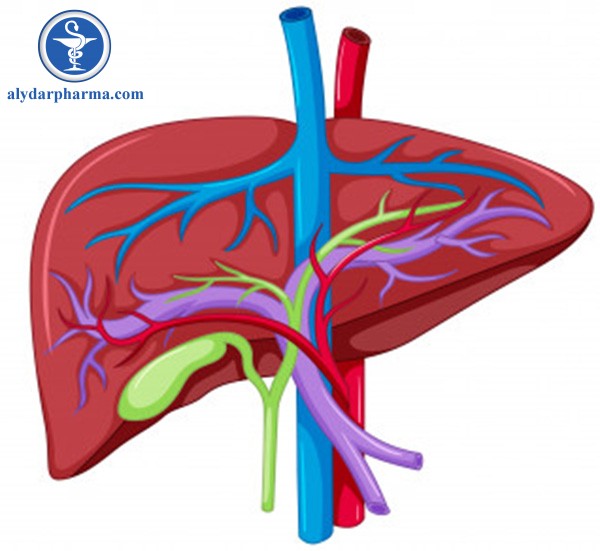
Một phụ nữ 55 tuổi bị ngứa sau 4 tuần điều trị trầm cảm bằng amitriptyline. Bà ấy dừng uống thuốc, nhưng lại bị vàng da vài ngày sau đó.
Bà ấy không có tiền sử bị bệnh gan hay phơi nhiễm với viêm gan và không uống rượu. Bà ấy chỉ sử dụng một thuốc khác là flurazepam.
Khi đi khám, bà ấy bị vàng da nhưng không sốt hay phát ban. Bilirubin toàn phần là 8.0 mg/dL và alkaline phosphatase huyết thanh lẫn nồng độ AST tăng (Bảng). Các xét nghiệm này bình thường trước khi bà ấy dùng amitriptyline.
Các xét nghiệm về virus viêm gan B và tự kháng thể âm tính và chụp gan bình thường. Bệnh nhân này có tăng bạch cầu ái toan sau 2 ây 3 tuần dùng amitriptyline.
Chứng vàng da và các xét nghiệm bất thường về gan được giải quyết sau 6 tuần, dồng thời chứng trầm cảm của bà ấy được kiểm soát bằng electrotherapy.
Từ khóa:
- Thuốc: Amitriptyline
- Kiểu: Ứ mật (R=0.8)
- Mức độ nghiêm trọng: 3+ (vàng da, nhập viện)
- Độ trễ: 4 tuần
- Phục hồi: 6 tuần
- Các thuốc khác: Flurazepam
Kết quả xét nghiệm:
| Thời gian sau khi sử dụng | Thời gian sau khi dùng | AST (U/L) | Alk P (U/L) | Bilirubin (mg/dL) | Khác |
| Trước đó | Trước đó | 10 | 35 | 0.5 | Eosinophil 2% |
| 2 tuần | Eosinophil 33% | ||||
| 3 tuần | Eosinophil 16% | ||||
| Dừng sử dụng amitriptyline do ngứa | |||||
| 5 tuần | 0 | 44 | 170 | 8.0 | Eosinophil 10% |
| 6 tuần | 1 tuần | 110 | 150 | 8.1 | Eosinophil 7% |
| 6.5 tuần | 1.5 tuần | 58 | 140 | 6.0 | |
| 7 tuần | 2 tuần | 5.0 | |||
| 11 tuần | 6 tuần | 53 | 1.3 | ||
| 7 tháng | 6 tháng | 45 | 1.0 | ||
| Giá trị bình thường: | <40 | <85 | <1.2 |
Biện luận:
Thời gian khởi phát từ 3- 4 tuần và ứ mật là đặc điểm của tổn thương gan do thuốc chống trầm cảm 3 vòng.
Việc phát hiện bạch cầu ái toan rõ rệt trong vì tuần đầu điều trị cho thấy có phản ứng quá mẫn, nhưng không có phát ban hay sốt. Sự phục hồi viêm gan ứ mật thường chậm hơn so với tổn thương tế bào gan cấp có mức độ nghiêm trọng trương tự.
Tài liệu tham khảo và cập nhật: 01 tháng 03 năm 2016
1. Zimmerman HJ. Tricyclic antidepressants. In, Zimmerman HJ. Hepatotoxicity: the adverse effects of drugs and other chemicals on the liver. 2nd ed. Philadelphia: Lippincott, 1999, pp. 495-8. (Expert review of hepatotoxicity published in 1999; hepatic injury caused by tricyclic antidepressants is less frequent and less consistent than with monamine oxidase inhibitors).
2. Larrey D, Ripault MP. Hepatotoxicity of psychotropic drugs and drugs of abuse. In, Kaplowitz N, DeLeve LD, eds. Drug-induced liver disease. 3rd ed. Amsterdam: Elsevier, 2013, pp. 443-62. (Review of tricylic antidepressant hepatotoxicity; serum enzyme elevations arise in 10% of amitriptyline treated patients; the prevalence of clinical hepatitis is low; the pattern of liver enzyme elevations varies; latency ranges from 1 week to 10 months; immunoallergic features are common).
3. O’Donnell JM, Shelton RC. Drug therapy of depression and anxiety disorders. In, Brunton LL, Chabner BA, Knollman BC, eds. Goodman & Gilman’s the pharmacological basis of therapeutics. 12th ed. New York: McGraw-Hill, 2011, pp. 397-416. (Textbook of pharmacology and therapeutics).
4. Holmberg MB, Jansson B. A study of blood count and serum transaminases in prolonged treatment with amitriptyline. J New Drugs 1962; 2: 361-5. PubMed Citation (Prospective monitoring in 100 patients on amitriptyline for up to one year; 38% had mild eosinophilia [all <10%]; ALT elevations occurred in 10%, but highest value was 77 U/L, which was less than twice normal).
5. Klerman GL, Cole JO. Clinical pharmacology of imipramine and related antidepressant compounds. Pharmacol Rev 1965; 17: 101-41. PubMed Citation (Extensive review of structure, pharmacology, clinical effects, mechanisms of action, drug interactions, and side effects of tricyclic antidepressants; jaundice occurs in 0.5 to 1% of treated persons and usually resolves rapidly with stopping).
6. Cunningham ML. Acute hepatic necrosis following treatment with amitriptyline and diazepam. Br J Psychiatry 1965; 111: 1107-9. PubMed Citation (54 year old woman developed drowsiness and confusion followed by jaundice 6 months after starting amitriptyline and diazepam [bilirubin 5.2 mg/dL, ALT 220 U/L, Alk P 95 U/L], with progressive coma and death 1 week later, autopsy showing massive necrosis).
7. Biagi RW, Bapat BN. Intrahepatic obstructive jaundice from amitriptyline. Br J Psychiatry 1967; 113: 1113-4. PubMed Citation (Woman of unstated age developed jaundice and pruritus 7 months after starting amitriptyline, resolving within 2 months of stopping).
8. Kramp JL. Glutamic pyruvic acid transaminases during treatment with amitriptyline and imipramine. Acta Psychiatr Scand 1967; 43: 1-7. PubMed Citation (ALT was elevated in 4 of 149 patients treated with amitriptyline or imipramine, but peak value was only 100 U/L).
9. Morgan DH. Jaundice associated with amitriptyline. Br J Psychiatry 1969; 115: 105-6. PubMed Citation (2 men and 1 woman, ages 40, 45 and 24 years, developed jaundice 14, 3 and 10 weeks after starting amitriptyline [bilirubin 42, 1.6 and 13.2 mg/dL, ALT 96, 40 and 800 U/L, Alk P 1-3 times ULN], 2 recovered and 1 died; one had recurrence 8 days after restarting).
10. Clarke AE, Maritz VM, Denborough MA. Phenothiazines and jaundice. Aust N Z J Med 1972; 2: 376-82. PubMed Citation (Chlorpromazine and amitriptyline cause precipitation of proteins when added to human bile in vitro and hepatotoxicity of these agents may relate to this characteristic).
11. Yon J, Anuras S. Hepatitis caused by amitriptyline therapy. JAMA 1975; 232: 833-4. PubMed Citation (23 year old man developed liver test abnormalities 8 months after starting amitriptyline [bilirubin normal, ALT 80 U/L, Alk P 270 U/L], resolving rapidly upon stopping and recurring 8 days after restarting [ALT 240 U/L, Alk P 270 U/L]).
12. Fiori MG. Tricyclic antidepressants: a review of their toxicology. Curr Dev Psychopharmacol 1977; 4: 71-110. PubMed Citation (Review of cardiac, hepatic, neurological, fetal and psychotoxicity of tricyclic antidepressants; most cases of hepatotoxicity have been attributed to hypersensitivity, but tricyclics are taken up and extensively metabolized by hepatocytes).
13. Anderson BN, Henrikson IR. Jaundice and eosinophilia associated with amitriptyline. J Clin Psychiatry 1978; 39: 730-1. PubMed Citation (55 year old woman developed pruritic rash and jaundice 3 weeks after starting amitriptyline, resolving rapidly upon stopping: Case 2).
14. Giller EL Jr, Bialos DS, Docherty JP, Jatlow P, Harkness L. Chronic amitriptyline toxicity. Am J Psychiatry 1979; 136: 458-9. PubMed Citation (54 year old woman with cirrhosis had high amitriptyline levels and recurrent anticholinergic symptoms when treated with it, perhaps due to impaired hepatic metabolism).
15. Døssing M, Andreasen PB. Drug-induced liver disease in Denmark. An analysis of 572 cases of hepatotoxicity reported to the Danish Board of Adverse Reactions to Drugs. Scand J Gastroenterol 1982; 17: 205-11. PubMed Citation (Among 572 cases of drug induced liver disease seen between 1968-78 in Denmark, psychotropic agents accounted for 93 cases, 54 of which were due to chlorpromazine; tricyclics not specifically mentioned).
16. Danan G, Bernuau J, Moullot X, Degott C, Pessayre D. Amitriptyline-induced fulminant hepatitis. Digestion 1984; 30: 179-84. PubMed Citation (51 year old woman developed jaundice and fever 2 months after starting amitriptyline [peak bilirubin 9.4 mg/dL, ALT 27 times ULN, Alk P normal], resolving within 2 months of stopping and recurring 14 days after restarting with acute liver failure and peak bilirubin 23.8 mg/dL, with slow but complete recovery over next 4 months: Case 1).
17. Larrey D, Rueff B, Pessayre D, Algard M, Geneve J, Benhamou JP. Cross hepatotoxicity between tricyclic antidepressants. Gut 1986; 87-90. PubMed Citation (39 year old woman developed abdominal pain 2 weeks after starting amineptine [a tricyclic antidepressant] with fever and eosinophilia [bilirubin 1.2 mg/dL, ALT 1360 U/L, Alk P 1.5 times ULN], resolving rapidly upon stopping and recurring 7 days after starting clomipramine [another tricyclic] [ALT 1050 U/L, Alk P 1.5 times ULN], again resolving rapidly upon stopping).
18. Geneve J, Larrey D, Pessayre D, Benhamou JP. Structure tricyclique des medicaments et hepatotoxicite. Gastroenterol Clin Biol 1987; 11: 242-9. PubMed Citation (Review of structural similarity and hepatotoxicity of tricyclic antidepressants focusing on amineptine, imipramine and amitriptyline).
19. Larrey D, Amouyal G, Pessayre D, Degott C, Danne O, Machayekhi JP, Feldmann G, et al. Amitriptyline-induced prolonged cholestasis. Gastroenterology 1988; 94: 200-3. PubMed Citation (37 year old man developed jaundice 5 weeks after starting amitriptyline [bilirubin 5.9 mg/dL, ALT 6.5 times ULN, Alk P 1.3 times ULN]; the drug was continued and bilirubin peaked at 23.4 mg/dL with 8% eosinophils and subsequent prolonged jaundice and pruritus [19-20 months] and ductopenia on liver biopsy).
20. Brems JJ, Merenda GO, Hayek ME, Kane RE, Flynn MF, Kaminski DL. Orthotopic liver transplantation resulting in amitriptyline toxicity in the recipient. Transplantation 1989; 48: 159-61. PubMed Citation (Transplantation of liver from a donor with fatal amitriptyline overdose, followed by acute hepatic failure in the recipient who recovered with retransplantation).
21. Pirmohamed MKL, Kittringham NR, Parkl BK. Idiosyncratic reactions to antidepressants : a review of the possible mechanism and predisposing factors. Pharm Ther 1992; 53: 105-25. PubMed Citation (Review of idiosyncratic reactions to antidepressants; possible mechanism of injury being production of a chemically reactive metabolite that is either directly toxic or induces a hypersensitivity reaction).
22. Berson A, Fréneaux E, Larrey D, Lepage V, Douay C, Mallet C. Possible role of HLA in hepatotoxicity. An exploratory study. J Hepatol 1994; 20: 336-42. PubMed Citation (Human leukocyte antigen [HLA] haplotypes done on 71 patients with drug induced liver disease, 12 due to tricyclics including 7 amineptine, 3 amitriptyline and 2 clomipramine; 6 [50%] had HLA A11 including 2 of the 3 amitriptyline cases; 12% in controls).
23. Remy AL, Larrey D, Pageaux GP, Desprez D, Ramos J, Michel H. Cross hepatotoxicity between tricyclic antidepressants and phenothiazines. Eur J Gastroenterol 1995; 7: 373-6. PubMed Citation (65 year old woman developed fatigue and serum enzyme elevations [ALT ~1300 U/L; Alk P ~380 U/L] 1 month after starting trimipramine; 3 years later she developed nausea and ALT elevations 10 days after starting desipramine [ALT ~250 U/L], and 2 years later developed abdominal pain and fever and enzyme elevations [ALT ~1100 U/L, Alk P ~510 U/L] 8 days after starting cyamemazine; each time with rapid recovery and no jaundice).
24. Grohmann R, Rüther E, Engel RR, Hippius H. Assessment of adverse drug reactions in psychiatric inpatients with the AMSP drug safety program: methods and first results for tricyclic antidepressants and SSRIs. Pharmacopsychiatry 1999; 32: 21-8. PubMed Citation (Analysis of reporting of adverse events among inpatients in 29 German hospitals between 1993 to 1997; among 48,564 patients, severe adverse events were reported in 896 [1.8%], both total and hepatic events were more common with tricyclics than SSRIs).
25. Randeva HS, Bangar V, Sailesh S, Hillhouse EW. Fatal cholestatic jaundice associated with amitriptyline. Int J Clin Pract 2000; 54: 405-6. PubMed Citation (75 year old woman developed fatigue and jaundice 4 months after starting amitriptyline [bilirubin 3.2 mg/dL, ALT 42 U/L, Alk P 400 U/L], progressing to fatal hepatic failure despite stopping drug promptly).
26. Milionis HJ, Skopelitou A, Elisaf MS. Hypersensitivity syndrome caused by amitriptyline administration. Postgrad Med J 2000; 76: 361-3. PubMed Citation (24 year old woman developed rash and fever 3 weeks after starting amitriptyline with erythroderma and lymphadenopathy [bilirubin normal, ALT 103 U/L, Alk P normal, 25% eosinophilia], resolving on corticosteroids within 1 month of stopping amitriptyline).
27. Carvajal García-Pando A, García del Pozo J, Sánchez AS, Velasco MA, Rueda de Castro AM, Lucena MI. Hepatotoxicity associated with the new antidepressants. J Clin Psychiatry 2002; 63: 135-7. PubMed Citation (Analysis of cases of hepatotoxicity from antidepressants in Spanish Pharmacovigilance System from 1989-1999, identified 99 cases; among SSRIs, 26 due to fluoxetine, 14 paroxetine, 6 fluvoxamine, 5 sertraline, 3 venlafaxine and 2 citalopram; among tricyclics, 16 clomipramine 7 amitriptyline, 6 imipramine; among miscellaneous, 3 nefazodone and 1 trazodone; but all similar in rate ~1-3 per 100,000 patient-years of exposure, except for nefazodone=29/100,000).
28. Milkiewicz P, Chilton AP, Hubscher SG, Elias E. Antidepressant induced cholestasis: hepatocellular redistribution of multidrug resistant protein (MRP2). Gut 2003; 52: 300-3. PubMed Citation (Two cases of cholestasis; 30 year old woman with jaundice 8 weeks after starting citalopram [bilirubin 4.4 mg/dL, AST 33 U/L, Alk P 637 U/L], resolving within 2 months of stopping; 63 year old man developed jaundice 3 months after starting dothiepin [a tricyclic antidepressant] [bilirubin 9.4 mg/dL, AST 40 U/L, Alk P 600 U/L], resolving on corticosteroids within 3 months of stopping and later tolerating fluoxetine for 12 months, but redeveloping jaundice after 2 months of paroxetine [bilirubin 15.2 mg/dL, AST 36 U/L, Alk P 544 U/L], resolving slowly by 6 months after stopping).
29. Lucena M, Carvajal A, Andrade R, Velasco A. Antidepressant-induced hepatotoxicity. Expert Opin Drug Saf 2003; 2: 249-62. PubMed Citation (Review of hepatotoxicity of antidepressants; antidepressant use has increased markedly between 1992 and 2002, accounting for 5% of cases of hepatotoxicity; tricyclics less likely to cause injury than MAO inhibitors; predominantly cholestatic patterns with onset in first 2-3 weeks; occasional reports of prolonged cholestasis).
30. Degner D, Grohmann R, Kropp S, Rüther E, Bender S, Engel RR, Schmidt LG. Severe adverse drug reactions of antidepressants: results of the German multicenter drug surveillance program AMSP. Pharmacopsychiatry 2004; 37 Suppl 1: S39-45. PubMed Citation (53,042 patients treated with antidepressants in 35 psychiatric hospitals in Germany from 1993-2000 were monitored for adverse drug reactions; increased liver enzymes reported in 16% on tricyclics, 5.5% on SSRIs and 12% of monamine oxidase inhibitors).
31. Sabaté M, Ibáñez L, Pérez E, Vidal X, Buti M, Xiol X, Mas A, et al. Risk of acute liver injury associated with the use of drugs: a multicentre population survey. Aliment Pharmacol Ther 2007; 25: 1401-9. PubMed Citation (Among 126 cases of drug induced liver injury seen in Spain between 1993-2000, 3 were due to amitriptyline with a relative risk of 14.2: estimated frequency of 6 per 100,000 person-year exposures).
32. DeSanty KP, Amabile CM. Antidepressant-induced liver injury. Ann Pharmacother 2007; 41: 1201-11. PubMed Citation (Review of drug induced liver injury and summary analysis of reports of injury from MAO inhibitors, SSRIs, tricyclics and atypical agents).
33. Chalasani N, Fontana RJ, Bonkovsky HL, Watkins PB, Davern T, Serrano J, Yang H, Rochon J; Drug Induced Liver Injury Network (DILIN). Causes, clinical features, and outcomes from a prospective study of drug-induced liver injury in the United States. Gastroenterology 2008; 135: 1924-34. PubMed Citation (Among 300 cases of drug induced liver disease in the US collected from 2004 to 2008, only 1 case was attributed to amitriptyline, no other tricyclic mentioned).
34. Reuben A, Koch DG, Lee WM; Acute Liver Failure Study Group. Drug-induced acute liver failure: results of a U.S. multicenter, prospective study. Hepatology 2010; 52: 2065-76. PubMed Citation (Among 1198 patients with acute liver failure enrolled in a US prospective study between 1998 and 2007, 133 were attributed to drug induced liver injury, but none were linked to amitriptyline).
35. Molleston JP, Fontana RJ, Lopez MJ, Kleiner DE, Gu J, Chalasani N; Drug-induced Liver Injury Network. Characteristics of idiosyncratic drug-induced liver injury in children: results from the DILIN prospective study. J Pediatr Gastroenterol Nutr 2011; 53: 182-9. PubMed Citation (Among 30 children with suspected drug induced liver injury, half [n=15] were due to antimicrobials and the rest largely due to anticonvulsants and CNS agents; one case was attributed to amitriptyline).
36. Björnsson ES, Bergmann OM, Björnsson HK, Kvaran RB, Olafsson S. Incidence, Presentation and Outcomes in Patients with Drug-Induced Liver Injury in the General Population of Iceland. Gastroenterology 2013; 144: 1419-25. PubMed Citation (In a population based study of drug induced liver injury from Iceland, 96 cases were identified over a 2 year period, none of which were attributed to amitriptyline or other tricyclic antidepressant).
37. Hernández N, Bessone F, Sánchez A, di Pace M, Brahm J, Zapata R, A Chirino R, et al. Profile of idiosyncratic drug induced liver injury in Latin America. An analysis of published reports. Ann Hepatol 2014; 13: 231-9. PubMed Citation (Systematic review of literature of drug induced liver injury in Latin American countries published from 1996 to 2012 identified 176 cases, at least one case of which was attributed to amitriptyline).
38. Chalasani N, Bonkovsky HL, Fontana R, Lee W, Stolz A, Talwalkar J, Reddy KR, et al.; United States Drug Induced Liver Injury Network. Features and outcomes of 899 patients with drug-induced liver injury: The DILIN Prospective Study. Gastroenterology 2015; 148: 1340-52.e7. PubMed Citation (Among 899 cases of drug induced liver injury enrolled in a US prospective study between 2004 and 2013, 20 cases [2%] were attributed to antidepressants, but only one to a tricyclic – imipramine).
